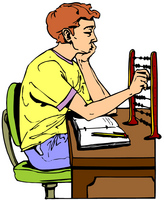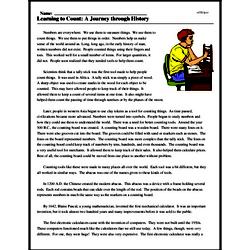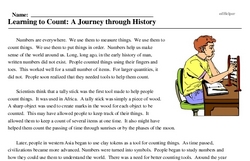Learning to Count: A Journey through History
Numbers are everywhere. We use them to measure things. We use them to count things. We use them to put things in order. Numbers help us make sense of the world around us. Long, long ago, in the early history of man, written numbers did not exist. People counted things using their fingers and toes. This worked well for a small number of items. For larger quantities, it did not. People soon realized that they needed tools to help them count.
Scientists think that a tally stick was the first tool made to help people count things. It was used in Africa. A tally stick was simply a piece of wood. A sharp object was used to create marks in the wood for each object to be counted. This may have allowed people to keep track of their things. It allowed them to keep a count of several items at one time. It also might have helped them count the passing of time through sunrises or by the phases of the moon.
Later, people in western Asia began to use clay tokens as a tool for counting things. As time passed, civilizations became more advanced. Numbers were turned into symbols. People began to study numbers and how they could use them to understand the world. There was a need for better counting tools. Around the year 500 B.C., the counting board was created. A counting board was a wooden board. There were many lines on it. There were also grooves cut into the board. The grooves could be filled with sand or markers such as stones. The lines on the board represented numbers. The counting board was more complex than the tally stick. The lines on the counting board could keep track of numbers by tens, hundreds, and even thousands. The counting board was a very useful tool for merchants. It allowed them to keep track of their sales. It also helped them calculate prices. Best of all, the counting board could be moved from one place to another without problem.




